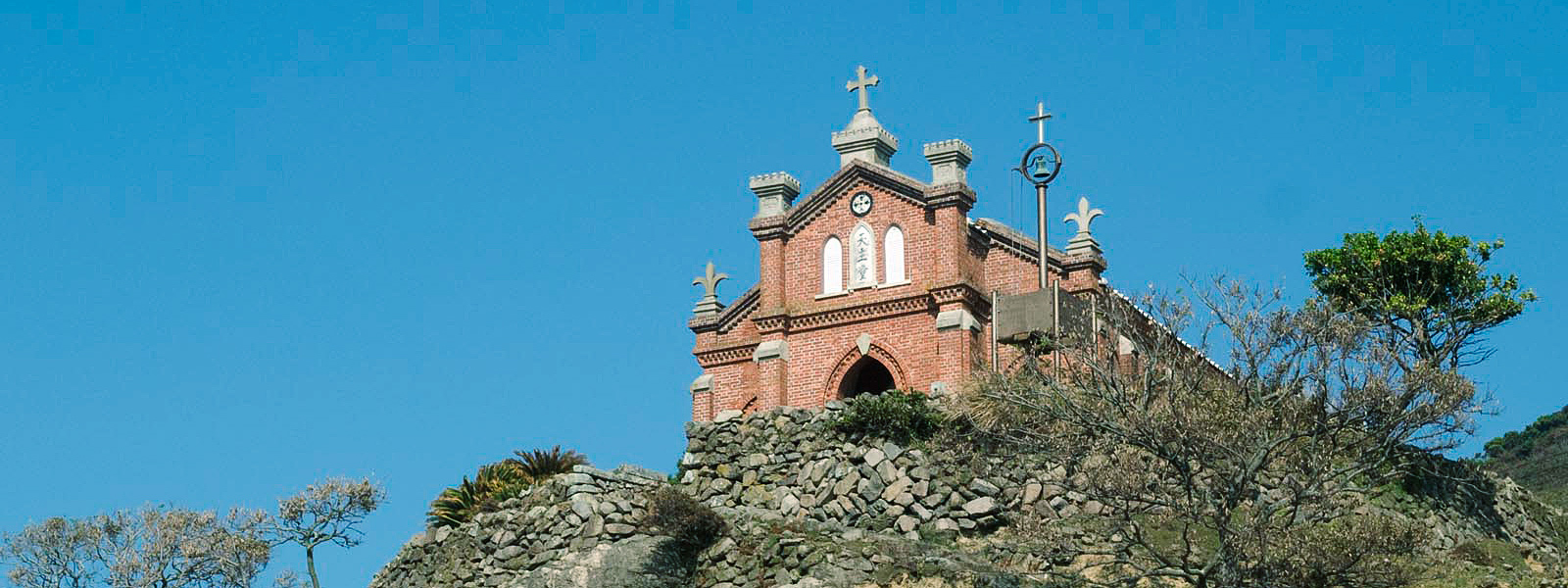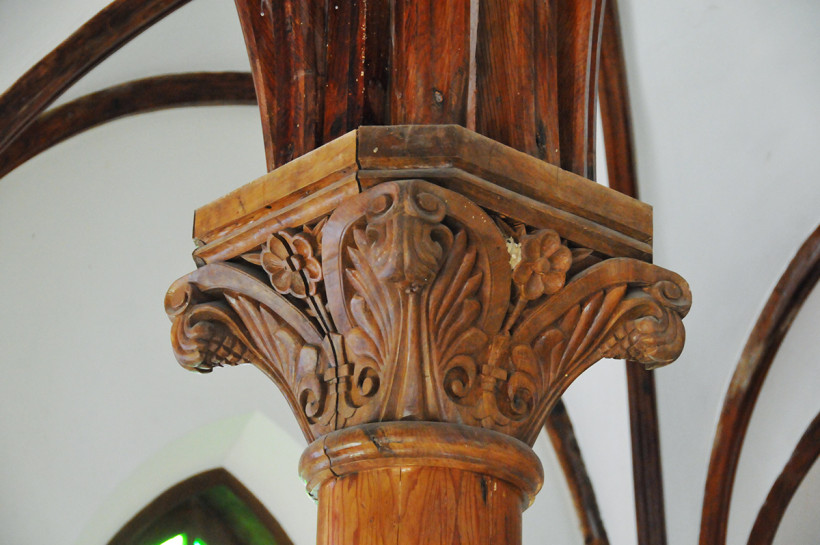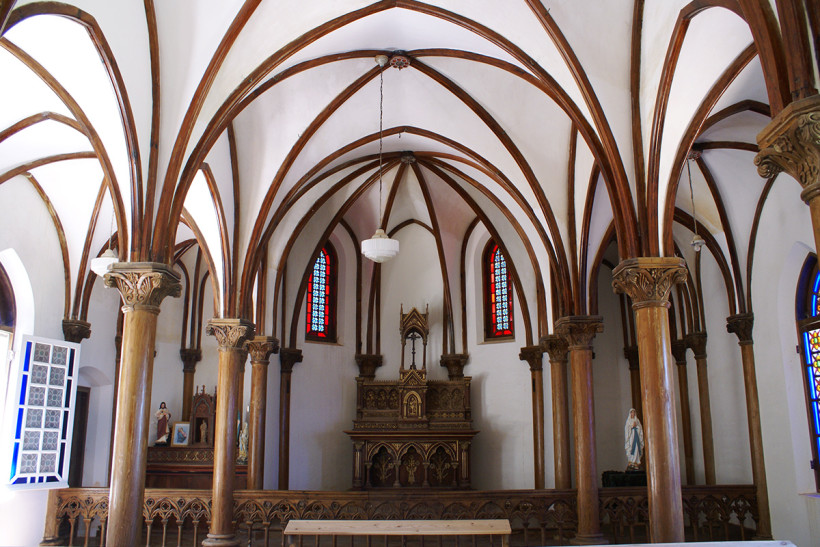
Their Dreams and Faith
The small brick church is an important testimony to the deep-rooted faith of the 17 suppressed Christian families who used to inhabit the island. The Nokubi land was first developed in 1716 by the Oda family: wealthy merchants from the neighboring Ojika Island. Back in the Edo period, their ancestors came to Ojika from Iki (near Fukuoka), where they subsequently grew to prominence through whaling, saké making, and new land development. Despite their efforts, however, the settlers struggled to cultivate the land on the steep slopes of Nokubi, giving up on their project eventually.
Then, 80 years later, in 1797, the Goto domain, who did not have enough labor force, made an agreement with the Omura domain in the mainland Kyushu to have people sent over for their land development projects. As a result, around 100 peasants from Sotome region crossed the sea, most of whom were Hidden Christians, looking for a safer place for their forbidden faith. Two of the migrant families came to Nozaki Island, and after overcoming many hardships, cultivating land on the steep slopes in the harsh coastal wind, they managed to settle in Nokubi.
Following the *Discovery of Hidden Christians at Oura Cathedral in 1865, the same year, Nokubi Christians visited Oura Cathedral to receive baptism. Christianity was still banned, however, and they were reported to the officials in Ojika Island. 8 families from Nokubi and 7 from Funamori (50 people in total), were captured and taken to Hirado island. There, they were tortured and forced to give up their religion.
When they returned home, they found their village destroyed, and all belongings missing. It was not until 1873, when the ban was lifted, that the Christians in Nozaki island were finally able to live their lives free of persecution.
*Discovery of Hidden Christian
In March 1865, the Hidden Christians from Urakami came to the Oura Cathedral and told the priest, Father Petitjean, that they were of the same faith as he was. The Pope was greatly moved when he heard of the story declaring it to be the “Miracle in the East”.

To mark the end of suppression, the Christian community of Nokubi constructed a wooden church in 1882. Later, the 17 families agreed to launch a much bigger project to replace it with a brick church, designed by a famous church architect Tetsukawa Yosuke. The total cost of the project came up to 3,000 yen (around 200 million yen today), and workmen hired for construction doubted that the 17 families living in poverty could come up with such a huge sum of money.
At first, the parishioners tried to get a loan from Ojika Island but failed to raise anything as nobody wanted to support the construction of a church. Undiscouraged, they led a communal life that involved adults eating only two meals per day, as well as doing all the heavy construction labor themselves. Funds were also raised from kibinago herring fishing.
At last, in October 1908, the church was completed. The whole sum of 3,000 yen was paid back in full right at the inauguration. The Hidden Christians, who faced religious persecution for many years, could finally raise their heads up high, gazing proudly at the beautiful brick churchー a monument to their undying faith.

With its newfound religious freedom, the Christian communities flourished over time until the country’s growing economy ironically forced people out of the island. The subsistence economy was replaced by the cash economy, and the island had little to offer when it came to making cash.
In Funamori in the south, there were 34 households at the end of the war. Yet by 1965, there were only 13 left, and the following year all 45 people moved to the mainland Ojika. In Nokubi, the population counted 171 in 28 households just after the war. In 1970, it was down to 6 households with a total of 28 people who too left in the following year, putting an end to the 150 year-long history of Christian faith in Nozaki island.
Now devoid of its parishioners, the church is no longer functioning but its historic value has been rightly recognized. In 1985, the town restored the church to its original condition, recognizing it as an Important Cultural Heritage of Ojika Town. In 1989, it was registered as a cultural property by Nagasaki prefecture. In 2018, after years of preparation and consideration, “Remains of Villages on Nozaki Island” was listed as a part of the UNESCO World Heritage Sites. Nozaki is also a part of the Important Cultural Landscape of the Ojika Islands, selected in 2011 by the Japanese government.
Today the former Nokubi Church, built with the sweat and tears of suppressed Christian families, stands guard over the deserted land. A bold statement of faith and vision— it keeps the memory of its parishioners alive for years to come.
IMPORTANT NOTICE
The former Nokubi church is currently undergoing major repair works that are scheduled to be completed in June 2025. During the renovations, the church building is covered by scaffolding, and is off-limit to visitors. hank you for your understanding and cooperation.